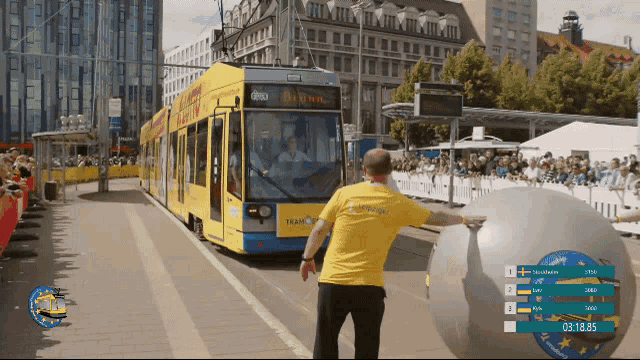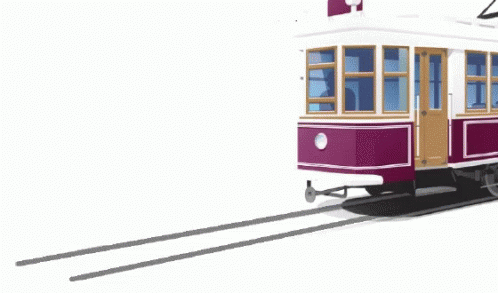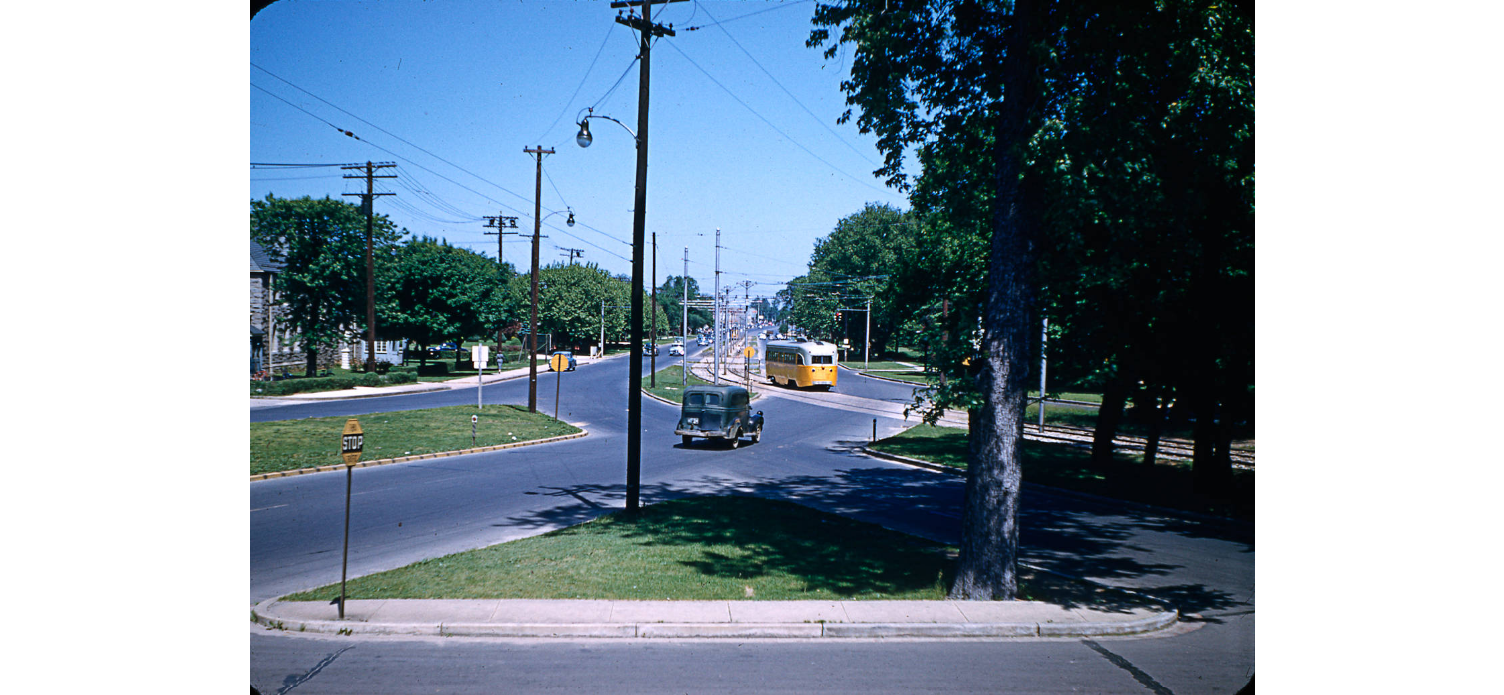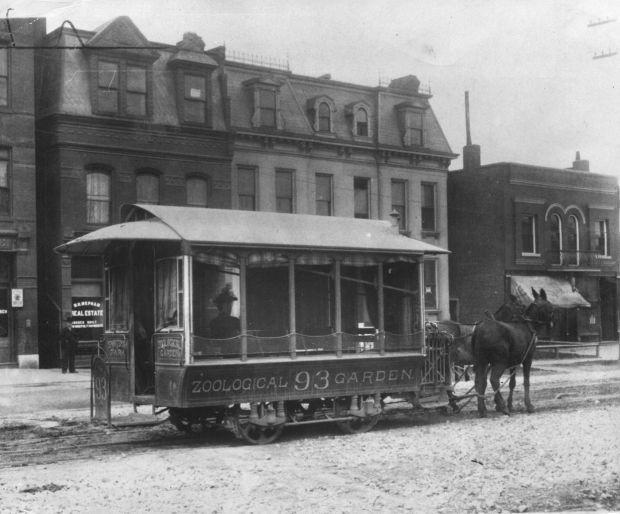|
1. PRACTICE: Spanish engineers and managers continually work, so they become more efficient with practice during tracking
and building.
2. SYSTEMWIDE TRANSPORT = HIGH TRUST: High trust in public transport is created in Spain due to accessibility for all circle
line loop system approach. Not one light rail, but an entire tram system - neighborhood connectors, and then adding subway,
and then high-speed rail system.
3. SPANISH UNIONS CONFERRED WTITH EVERY STEP OF THE WAY: The principal Spanish union federations representing workers in
the construction of Spanish rail projects have seats at the table through project(s) - making wholistic decisions. For example,
Madrid’s CRTM, UGT and Trade Union Confederation of Workers’ Commissions (CCOO) — enjoy direct representation.
4. HIGH SPIRITS It is highly unlikely, in Spain to have unintentional or intentional stoppages of work United States have
due to unions always being part of the decision process. Spanish workers thereby work at speed they are intended to (as U.S.
workers often lollygag, taught and feeling disrespected)
5. WORKERS TREATED WELL: Spain’s generous, high-quality public health system provides medical care for all
Healthcare should not be tied to what type of job you have.
6. EFFICIENT = LESS MANAGEMENT: Spaniards enjoy low staffing employment costs and subsequent substantial costs — and
you begin to see why, especially when health care and pension expenses can cost around half the prevailing wage rate in the
United States, rail construction is so much more efficient in Spain.
Finally, since Spain has such extensive experience building public transit, labor contracts reflect state-of-the-art staffing
requirements that minimize the costs of overstaffing.
"American Exceptionalism Off the Rails: Why the United States Spends so Much but Gets so Little Public Transit." - Jacobin
(June 2022)
Texas High Speed Train Vision: 'Low Impact Design" - Texas Central [For-Profit Japan] Shinkansen trains
"'I think it's something that we want to see. We want to be on the cutting edge,' Dallas City Council Member Carolyn
King Arnold said. 'We want to see this project off and running as soon as we possibly can. We want to see the dirt turning."
U.S. Congressmen Jake Ellzey (R-Texas) and Michael McCaul (R-Texas): "Texas Congressmen Oppose federal funding for Dallas-Houston
High-Speed Rail" - Trains (October 4, 2023)
"Houston-to-Dallas High-Speed Rail Project Deems to be Gaining Momentum" - - Houston Public Media, University of Houston (April
27, 2024)
SPAIN'S TRAINS & TRAMS: PRICE & QUALITY
Spanish Government wants 18-30 Year Old to Travel up to 90% discount - Ministry of Transport and Sustainable Mobility
"High-Speed Rail is Booming in Spain: Could its Lower Prices and More Services be a Model for Europe?" - Euronews (April 15,
2023)
Highlights:
• Spain is the first country with three competitors in the high-speed railway market.
• Competition in high-speed rail in Spain reduced prices by 28%–30% in nine months.
• The impact on incumbent's first-class and second-class prices was the same.
• Both low-cost and full-service competitors similarly affected incumbent pricing.
"Spain's High-Speed Trains Aren't Just Efficient, They Have Transformed Peoples Lives" - The Guardian (October 11, 2023)
"Spanish High-Speed Rail: The Most Extensive in Europe" - Global Railway Review (November 8, 2023)
"Spain produces the most efficient high-speed in the world" - Inceco
"Railway" - Ineco
REPORT: "Ias_Nsa Espana 2023" - Agencia Estatal de Seguridad Ferroviaria [Spanish]
"Passenger Rail in the US vs. Spain - Brace Yourself for Utter Chagrin" - City Nerd (2023) [Both Union built]
Businesses eager for return of Rampart Streetcar because it brings, MUCHO MONEY!!!!
"TRAM" Search
Have Already???? "Are Streetcars Making US Cities Better?" - City for All (2023)
CASE STUDY REPORT: "Streetcar Policy Development" - Parsons Brinckerhoff (2015)
| TRAM ~ STREETCAR BOWLING!! |

|
| STREETCAR ADVERTIZES WELL LOTTERIES IN GERMANY!!!! |
"I have a myriad of choices with the streetcars! Saving at least $250,000 over my lifetime by not buying automobiles,
and all that goes with them is how I do it! I can afford a more expensive neighborhood to live in, visit another country
on vacation - (Imagine me - getting a passport!), save vast money for retirement (and go on those lavish vacations), save
for kids' education, give tons to charity, heck, I can start my own foundation....
Because; the streetcar brings me everywhere I want to go, and more!"
Who brings billions of tax revenue? Who is quiet, quick, and the only transportation besides trains that are truly, "Zero
Emissions?" Who gets awarded Olympics, FIFA, and other world events because only they move densely populated people in cities
short and long distances? Who is pretty much free when creating a, "Smart City?" This page distinguishes, once and for all,
that the best value for travel, health, earth, and cost - is:
The Streetcar. ~ The Tram. ~ The Trolleycar.
Streetcars prove to be brick and mortar prosperous, lessens people driving and purchasing automobiles, which in turn lessens
the costly affair of road repair, especially the heaviness of electric-batteried, weighing even an extra 2 tons with water
cooling systems. Streetcars always provides clean fresh air, has no parts that can ever pollute, and are always ready
for you to board and enjoy a smooth enjoyable ride!
Tempe (2023)
DO STREETCARS PROMOTE ECONOMIC DEVELOPMENT?
"Streetcars can help attract and focus development by providing a more permanent transportation investment than buses
and by promoting a walkable environment. For example, the greater permanence of a streetcar may improve the
coherence of the urban environment, and may reduce the risk for developers of offices, residences, and retail, spurring
job creation. The proximity of a streetcar may also reduce some costs that would otherwise confront
private developers, such as the need for a large numbers of parking spaces.
According to one study, the area within a quarter-mile of the Little Rock streetcar system, opened in 2004,
has had a capital investment of $800 million in new businesses, residences, and other activities between 2000 and 2012.
In addition, during construction, streetcars tend to be less disruptive of existing activities than other
forms of rail systems."
ARE STREETCARS COST-EFFECTIVE?
Streetcar systems can be much less costly to build than light rail systems, and may be particularly attractive
in small and medium-size cities where a larger and more expensive rail system is not appropriate."
Can Federal Funds Be Used to Operate Streetcars? YES - Congestion Mitigation and Air Quality Improvement Program (CMAQ)
What Sources of Federal Funding Are Available to Build Streetcars? SEVERAL
The Smart Cities Council [About Us]
SEVEN RULES FOR FOR SUSTAINABLE, LOW-CARBON COMMUNITIES:
Professor Patrick Condon University of British Columbia, Chair of James Taylor in Landscape and Livable Environments, and
author of, Seven Rules for Sustainable Communities
Seven Rules for Sustainable Communities: Design Strategies for the Post Carbon World ~ Patrick Condon Presentation (2011)
1. Restore the Streetcar City
"The North American city was - and is a streetcar city {streets were designed only for streetcars}. Streetcar cities
are characterized by easy access to transit, a wide variety of house types, and services and job sites very close at hand
-- the exact elements of a sustainable city. We have largely ignored this fact. It needs rediscovering. - Tyee
"Condon sees streetcars as the most feasible path given these systems work well with the single-family homes that dominate
the American and Canadian landscape. Streetcars can easily be added back into communities with corridors and many suburbs
can also be retrofitted to include them. ....
Land use changes can help reduce 50 percent of greenhouse gas emissions (GHGs). When you add in greener buildings and transportation
networks, communities can get to 80 percent reductions, says Condon. The streetcar city is so central to sustainability because
it would be the most efficient way to leverage land use and transportation changes together to reduce GHGs. In addition, every
community with a population over 5,000 in the U.S. once had streetcars so they worked once. .... Streetcars are the more
efficient option over the long-term because they carry more passengers.
In addition, bringing back streetcars would support density. In Vancouver, the streetcar was added first, then developers
subdivided properties into lots. More than 80 years later, dense, mixed-use development was filled in, realizing the developers’
initial vision of density.
Unfortunately, for many cities that had the streetcar arterials in place, 'the forces of auto sprawl' took over the inter-urban
system. As a result, post-streetcar, cities and communities have moved away from dense living in townhouses to one-story bungalows
that don’t make efficient use of space. Without the streetcars, cities lost mobility.
North America has a rapidly aging population - and soon cannot drive.
"At a cost of $20-25 million per kilometer, streetcars can be added to many communities providing low-cost access for rapidly
aging baby-boomers."
2. Design an Interconnected Street System
"Fine-grain interconnected street networks ensure that all trips are as short as possible, disperse congestion, and are compatible
with walking, biking and transit. " - Tyee
"The U.S. continues to create hub and spoke transit systems even though jobs “are no longer in the center of those
hubs.' Jobs need to be located close to home. To encourage this change, “the left-over ideas of the 1960?s”
focused on the car need to be thrown out. In sprawl conditions, 'there are no alternative networks, and the main intersections
are highly loaded.' This enables the growth of big box stores, intersections that pedestrians can’t cross {stroads},
increased traffic through those intersections, and a higher number of traffic fatalities.' In contrast, interconnected
streets can provide many alternative routes to reduce congestion. Condon argues cities 'need to get in love with corridors'
that can enable access to side streets and facilitate the growth of density."
3. Locate Commercial Services, Frequent Transit, and Schools Within a Five-Minute Walk.
{[At least a walkable and rolling distance.]}
"People will walk if there is something to walk to. The most important walking destinations are the corner store and
a transit stop. A minimum gross density of 10 dwelling units per acre is required for this to work." - Professor Condon
There is consensus among many educators, smart growth, new urbanist planners, and landscape architects. Car-centric neighborhoods
and communities have a hard time achieving walkable zones, especially for schools.
4. Locate good jobs close to affordable homes
The trend toward ever larger commute distances for workers must be reversed. "Good jobs close to home" is a fundamental requirement.
The vast majority of new jobs in the United States and Canada are compatible with complete community districts." - Tyee
Jobs need to be close to residential areas - revitalizing the streetcar designed corridors. This is, "Smart Growth"; dense,
mixed-use developments in inter-connected street networks. Far-reached, isolated industrial parks and parking lots, once
forests, were 'clear-cut' 80-100 acres and must cease (not, "sustainable"). SOLUTION: Instead, one-acre sites should be
a model reusing existing buildings and parking lots. Change zoning laws for industrial parks to multi-use and adding new
uses: homes, stores, and other amenities.
5. Provide a diversity of housing types
Zoning laws have tended to segregate communities by income. Communities designed for only one income cannot be complete, and
when repeated throughout the region, they add to transportation problems. - Tyee
Baltimore City must prepare for a population of 3 million. Invest in mixed housing sizes. Live above your business is still
popular, and must be expanded. Streetcars bring booming economic power, and this type of townhouses must expand to re-weave
the tapestry of Baltimore city corridors.
6. Create a linked system of natural areas and parks
"Keeping our waters clean and our streams and rivers healthy requires a rethinking of urban drainage systems and stream protection
policies. Maintaining the integrity of these systems must be a first design move when planning new communities. Far from protecting
these systems through restriction, these systems must form the public space armature of new and restored communities." - Tyee
Streetcars built suburbia by them on-purpose ending routes to a desirable day trip to a lake or beach, or even a newly built
amusement park to encourage people to ride the streetcars, and see where they could live by realtors, who bought the land
cheaply along the routes.
“Preserved nature provides a natural interface for streetcars.” - Professor Condon
"Frederick Law Olmsted’s Emerald Necklace system in Boston, which “is better, bolder than Central Park,”
is not only an ecological solution for storm water management, but a great example of how to use “dead space”
to complement a streetcar system. In addition, the necklace system presents a model for how to 'be aggressive with nature.'
Condon called on landscape architects to 'not just put fences around the remaining remnants of natural history in a city,”
but 'work with nature' to create a new, vibrant environment within cities."
7. Invest in lighter, greener, cheaper and smarter infrastructure
"Suburban homes have at least four times more infrastructure per dwelling unit than do walkable streetcar neighbourhoods.
Exaggerated municipal standards for roads and utilities cost too much to build and maintain, and they destroy watershed
function. Smarter, cheaper, and greener strategies are required." - Tyee
Green infrastructure, which involves using man-made systems to mimic natural functions, is 'smarter infrastructure.' Condon
argued that communities should be 'preserving the natural functions of the landscape' as much as possible. 'Water doesn't
runoff natural landscapes.'
The rule for green infrastructure systems should be to reduce and capture one inch of rainfall per day. As an example,
Condon pointed to Pringle Creek, which he said has one of the 'most advanced green infrastructure systems available at the
urban scale.' There are no storm water drainage pipes or curbs. During three 100-year storm events, there also wasn't
any flooding.
About Pringle Creek, Salem Oregon
THE FINAL RULE: Love one rule, love them all
These principles represent the elements of a whole. Achieving one without the others -- particularly if it is at the expense
of the others -- will be of limited value and could be
counterproductive.
Alternative article - "Seven Rules for Sustainable Communities: How City Design Can Help Save the Planet. First in a Series
From a Vital New Urban Planning Handbook" - The Tyee (2010)

IT'S ORIGINAL!
In Toronto, the original streetcar rail tracks of 1849 are being used today.
1849:
Horse-drawn stagecoaches operated by The Williams Omnibus.
1860's:
Toronto Railway Company (TRC) purchased The Williams Omnibus, tracks and all (except perhaps the horses).
August 15, 1892:
The first electric streetcar to operate in Toronto officially went into service, growing into Toronto, suburbs, and beyond
to streetcar system today.
REFURBISHING RAIL TRACKS ~ COSTS PENNIES
Depending on condition, rails, whether exposed or buried in asphalt and cement, are the best investment to NEVER remove.
Removing not only costs millions to remove, but it is imperative that rail must be in all manners in order to combat health
(cancer from tire PAHS and other chemicals) and climate change - climate crisis.
TEXAS!
"When Dallas first started their streetcar line (granted it wasn’t the City of Dallas, but a local non profit organization
that got the ball rolling first) they used the old track whenever possible. From talking to officials in Dallas, it cost
them on average $79,000 a mile to use existing track. With almost all of the track still intact under Market Street,
that would be a tremendous savings. That would bring the total cost to repair and fix the rail for the six-mile
Market Street line to $474,000. Let’s round up to $500,000 and add another $1 million to repair sections of the
line. That's an estimate of $1.5 million for the track."
BUILDING ANEW
"The streetcar mode was selected over the LRT mode due to its compatibility with the City of Tempe's downtown atmosphere,
smaller footprint, and its ability to run off-wire through its historic sections of the downtown area."
WHAT CHICAGO KNOWS IS WHEN IT COMES TO IMMOVABLE TRANSIT, DEVELOPERS REACT - "BUY":
"If people have investment in this shopping center, we all will patronize and respect it," said Lyneir Richardson,
principal at Chicago TREND, a Black-owned real estate investment group that focuses on revitalizing aged and troubled retail
centers in Black communities."
Rule 1) Restore the Streetcar City
Bringing back streetcars would supports old and creating nwq density, because, developers LOVE STREETCARS! PERMANENT TRANSPORTATION!
Eyeballs on their businesses!
"Post-streetcar, cities and communities have moved away from dense living in townhouses to single family detached houses that
use space inefficiently. Lack of streetcars made cities not only lose mobility, but became degraded and vacant.
Rapidly aging "Baby Boomers" who will shortly no longer be able to drive, but still want their independence through Streetcars
WHO IS A "SMART CITY?"
KANSAS CITY IS A SMART CITY
"The Kansas City Streetcar, a 'smart' public transit project, lays the groundwork for the Missouri city's 10-year
Smart City Initiative."
Only 100 Million for entire installation - including current Conduit Use.... Like throwing in free Streetcar Route Loop!
To Pew Foundation; "Smart City" equals Kansas City.
THE PLAN:
"Kansas City is the Biggest U.S. City to Offer Free Transit. Here's How It Works - NBCLX (2021) [WATCH]
"KC Streetcar Hosts Final Open House Ahead of Groundbreaking - TV 4 FOX Kansas City (2022)





| BALTIMORE TRANSIT STREETCAR NUMBER 7078 |

|
| EDMONDSON AVENUE & OLD FREDERICK ROAD/BALTIMORE NATIONAL PIKE - CARLINES 9 & 14 MAY 27th, 1955 |


|
| SAINT LOUIS ZOOLOGICAL GARDEN STREETCAR PULLED BY 2 MULES - 1870'S |
...........................................................................................................................................................................................................................................................................................................................
|
